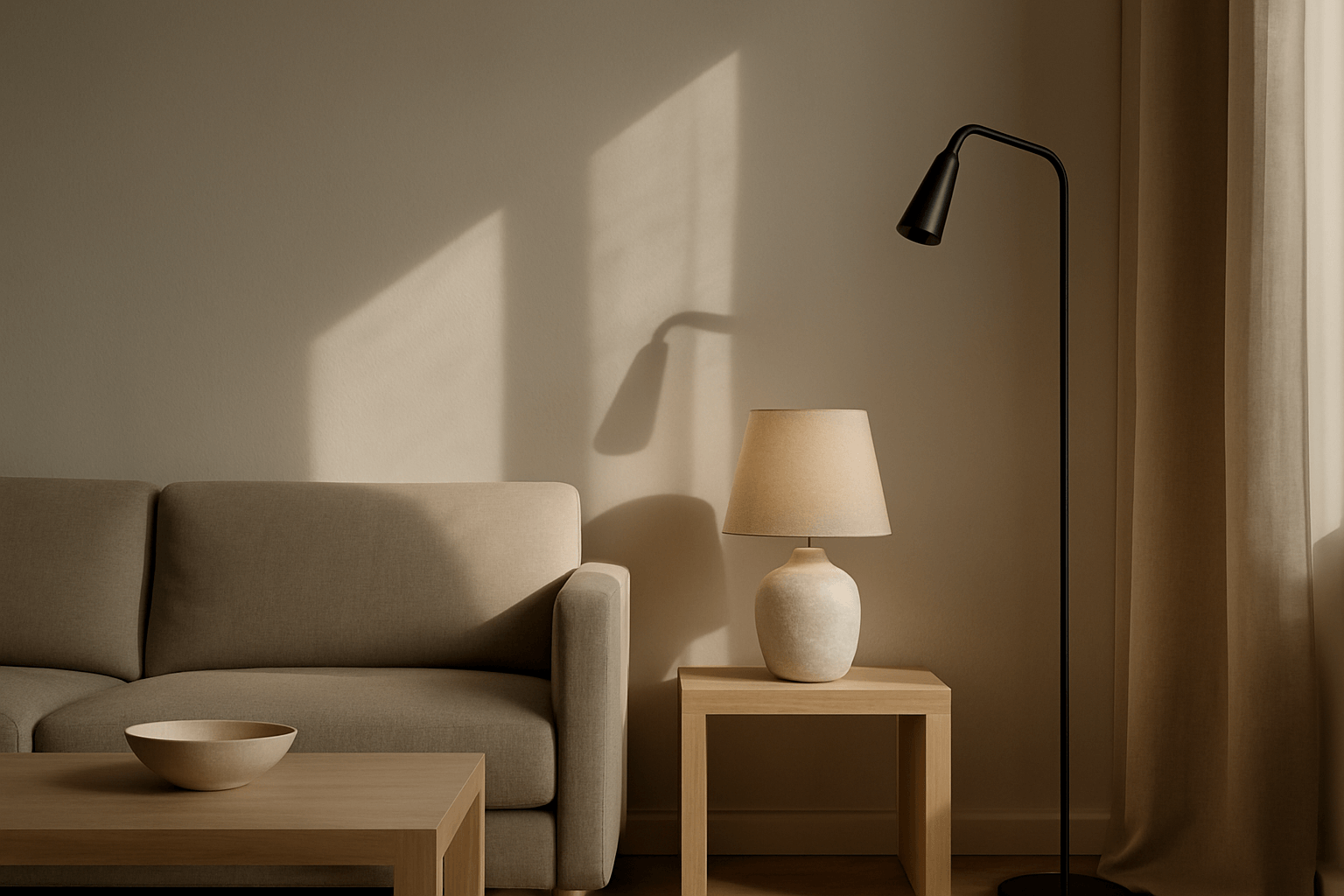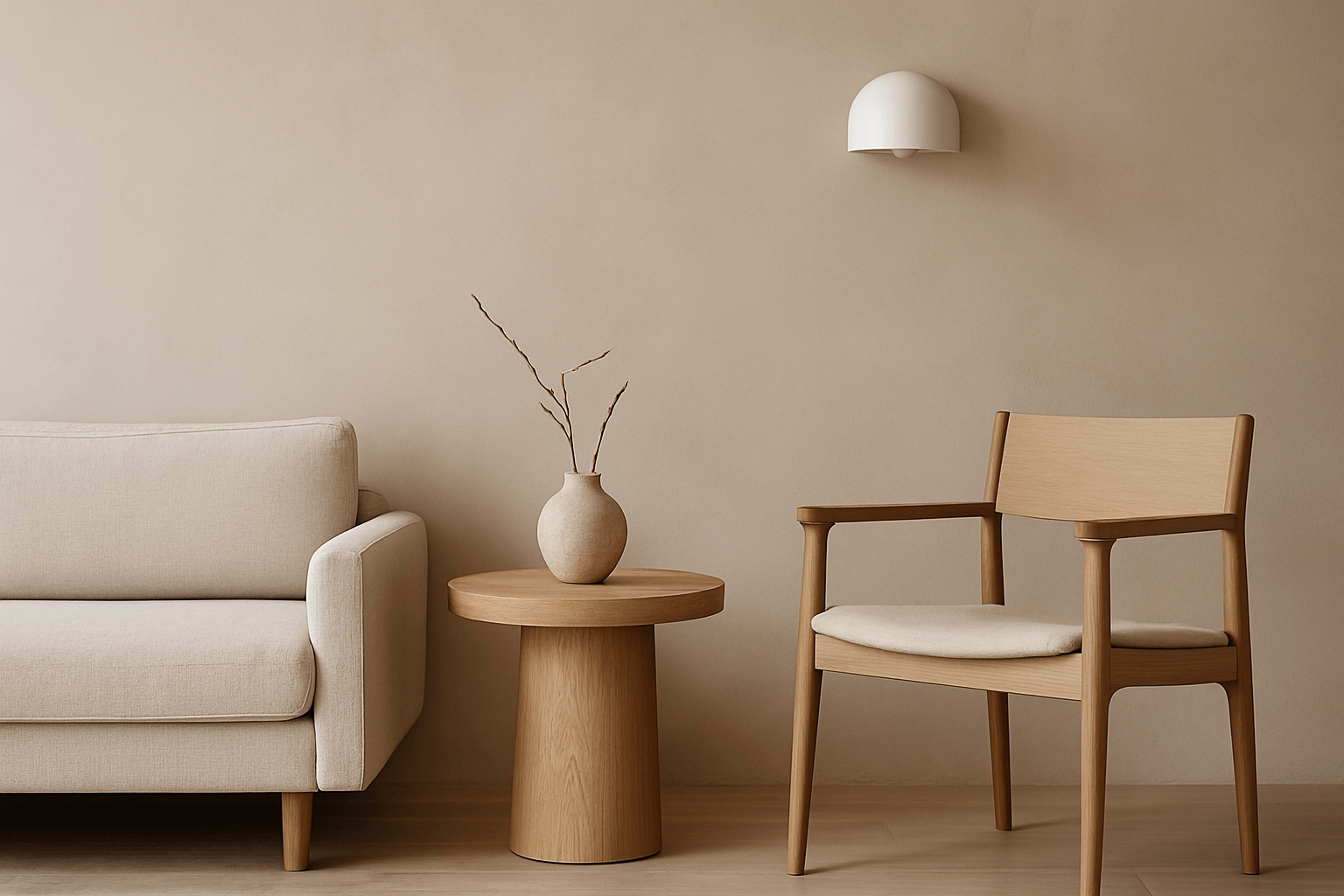Light Shapes Mood — Minimalism Shapes Focus
Minimalist interiors thrive on simplicity.
But simplicity doesn’t mean flatness. It needs depth, warmth, and atmosphere.
The solution? Layered lighting.
By using multiple light sources at different levels and intensities, you can create spaces that feel alive, dynamic, and deeply calming.
1. What Is Layered Lighting?
Layered lighting involves using:
-
Ambient lighting: overall room illumination
-
Task lighting: focused for reading, cooking, working
-
Accent lighting: highlights textures, objects, or architecture
Each layer serves a purpose — together, they create a rich, nuanced atmosphere.
2. Why Layering Matters in Minimalist Design
Minimalist spaces avoid excess decoration.
Lighting becomes the tool to add:
-
Visual interest without clutter
-
Depth and softness through shadow play
-
Emotional warmth by guiding attention
Light fills the role that “more stuff” would in a busier space.
3. How to Layer Light Intentionally
Start with function:
-
Overhead lighting for overall brightness (soft, diffused fixtures)
-
Table and floor lamps for task-specific areas (reading corners, desks)
-
Wall sconces or directional lights to highlight architectural features or textures
Balance brightness and softness. Avoid harsh, uniform light.
4. Using Light to Create Zones
Layered lighting helps define different zones without walls:
-
A dim floor lamp anchors a reading nook
-
Pendant lighting defines a dining area
-
Subtle wall sconces frame quiet corners
Each zone gains its own mood and purpose.
5. The Role of Natural Light
Natural light is the ultimate layer.
-
Let it guide furniture placement
-
Use sheer curtains to soften daylight
-
Combine with artificial layers to maintain depth from day to night
Minimalism celebrates this dynamic rhythm.
Final Thought
Layered lighting is the invisible architecture of minimalist interiors.
It shapes depth, guides attention, and creates atmosphere — all without adding clutter.
Light thoughtfully, live calmly.
















